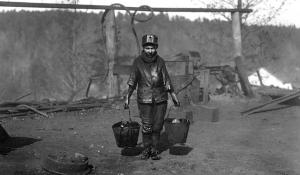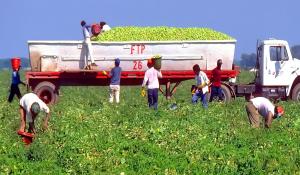
Pressure is rising, creating real progress. Workers are pushing for unions and an end to poor treatment at some of the country’s most recognizable companies. Meanwhile, workers in every sector of the economy are recognizing a need for work/life balance and interest in the four-day workweek is growing.
At the same time, there have been alarming setbacks. Arkansas passed a law making it easier for children to work grueling jobs and other states are following suit.
Needing to push against child labor, organize in protest of poor working conditions and advocate for shorter work weeks… we feel like we’ve seen this before. With this issue, we explore the challenges and victories that workers face today, which are iterations on justice and equity issues from the past. We delve into the power of collective action, the potential of a just transition when it comes to climate solutions, the challenges of facing profit-driven corporations, and the tragedy of kids working dangerous jobs.
Workers across the labor force—whether doing manual labor, employed in the service industry, or sitting behind computers everyday—are feeling discontent and ready to do something about it. National Labor Relations Board chairman and professor Mark Pearce says that the pandemic was the wakeup call and catalyst—for people asking the question, “Is there another way to work and live?” Vulnerable workers in the pandemic were “not only scared, they were pissed,” Pearce said to CNBC.
With companies pivoting and shuttering, work looks and feels different since the start of the pandemic. Jobs and paychecks disappeared for the estimated 9.6 million workers who lost their jobs in the first three quarters of 2020. Some social systems provided support, such as stimulus checks and paid sick leave, and other systems failed, as up to 14% of families didn’t have enough to eat at the peak of the crisis.
After the pandemic laid bare the problems with work across the economy, people want a better way forward—and ways to build our communities to help ourselves. For ideas about how to do that, turn the pages to read more about workers organizing with new momentum, the rise of the climate-labor connection, and the growing interest in the four-day work week.
We also explore those areas where system change is most needed—and the most difficult. People who are already marginalized due to systemic racism and inequality are too often stuck in low-wage jobs and in workplaces where it is unsafe to demand change. Consider, for example, children workers and outdoor workers.
In 2022, Americans witnessed, and some participated in, union resurgences across the country, along with the highest approval of unions since the major labor organizing in the 1960s. At the same time, we are seeing a corporate backlash to worker power with companies engaging in massive layoffs and outright denial of poor treatment.
Labor victories happening right next to attacks on labor organizing and laws is why we need governments at all levels, companies of all sizes, and communities everywhere to create a culture, alongside policies, that values workers in the long term.
Green America’s labor campaigns director, Jean Tong, reminds us not to forget that each worker we meet in these pages or hear about on the news is a member of a community—maybe yours. As we support a local union or call for better safety standards, we lift up our communities. As we build greener, more just workplaces, we make our cities, towns, and country stronger, too.







